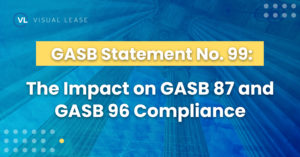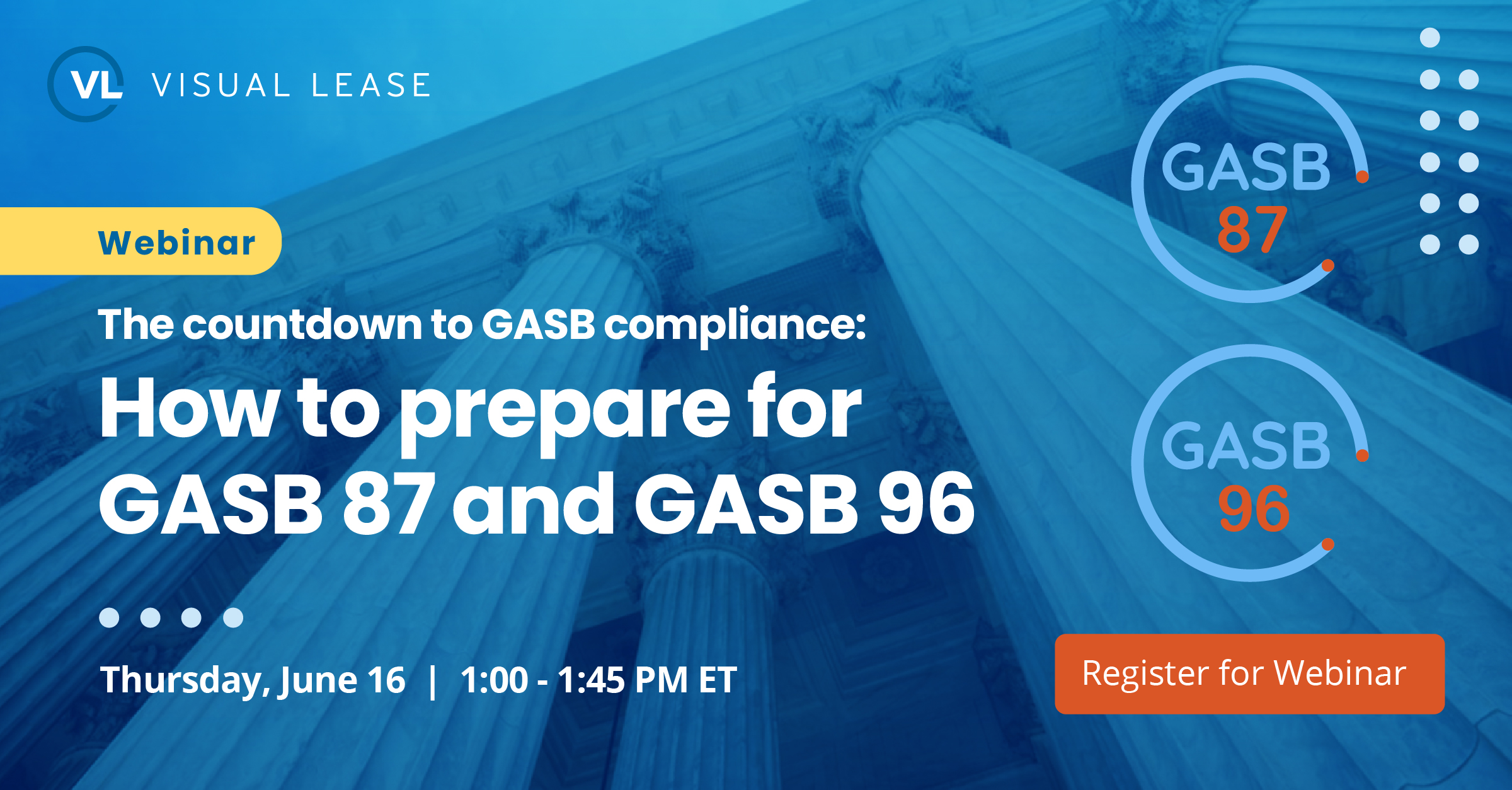
Suppose you’re an accountant who manages leases or a lease administrator working for a state, country or local government. You may even work for a public entity such as a public university, college, hospital, utility or airport. In either case, you are affected by this new Statement No. 99 and we’ve provided this summary to help you to quickly understand the impact on lease accounting under GASB 87 and accounting for SBITAs under GASB 96.
Governmental Accounting Standards Board (GASB) Statement No. 99, Omnibus 2022 was released in April 2022. It started as an Omnibus project which GASB creates when enough issues and technical inconsistencies are identified across the existing body of Statements.
Statement No. 99 responds to practice issues raised as the statements were adopted and to address accounting and financial reporting for financial guarantees. The following covers the practice issues impacting lease accounting (GASB 87) and accounting for SBITAs (GASB 96).
Practice Issues
- Determining the lease term, also applies to the term of an SBITA (Statement 96)
- Classification of short-term leases, also applies to short-term SBITA (Statement 96)
- Recognition and measurement of lease liabilities and receivables, also applies to recognition and measurement of a subscription liability (Statement 96)
- Identification of lease incentives
Effective Dates
The requirements related to leases and SBITAs are effective for fiscal years beginning after June 15, 2022.
1. Lease Term: Clarification of Lease Termination and Purchase Options
GASB Statement 87 Paragraph 12
The issue was raised to the Board that in certain situations, a purchase option could result in a lease liability that includes the present value of payments that would never be realized due to exercising the purchase option. The result would be an overstated present value. The Board believed the purchase option should be considered as an option to terminate and used when considering the lease term. GASB 99 clarifies the lease term should exclude the period, if any, after the option is estimated to be exercised.
The Board also addressed the prescriptive nature of the last sentence in paragraph 12 of Statement 87. They believed it could lead accountants to view a lease termination due to the violation of contract terms and conditions as a termination option. GASB 99 clarifies what constitutes a lease termination option as an unconditional right in the lease contract. GASB 99 also clarified that this should only be applied to contracts that transfer ownership (paragraph 19 of GASB 87).
2. Short Term Leases: Clarification of Cancellable Periods and Lease Extensions
GASB Statement 87 Paragraph 16
Cancellable periods in Statement 87 differed from Statement 96 and Implementation Guide 2019-3. Clarification provided by this Statement 99 aligns 87 and 96 with the same definition which includes that both parties to the lease have an option to terminate the lease without the need for permission, and/or both parties must agree to extend the lease term.
Another issue the Board responds to in this Statement is how to assess a short-term lease when an extension is created. The concern was that only considering the remaining term may influence entities to structure their leases to avoid recognition. The clarification is that the extension of a lease requires the lease to be reassessed and if the term (original lease term plus the modified term) is greater than 12 months, the lease needs to be reclassified. For a lease that is reclassified from a short-term lease, the measurement of the lease receivable or liability should be from the modification’s start date. This Statement also applies to paragraph 13 of Statement 96 for SBITAs.
3. Lessee and Lessor: Clarification of Variable Payments and Lease Remeasurements
Other Than Short-Term Leases and Contracts That Transfer Ownership
Lessee GASB Statement 87 Paragraphs 21, 22, 26 & 28
Lessor GASB Statement 87 Paragraphs 44, 45 & 50
Accountants raised concern over what variable payments should be included in the lease liability or receivable. To clarify, variable payments, per paragraphs 21, 22, 44 and 45 of GASB 87, that are calculated using an index or rate (such as the Consumer Price Index or a market interest rate) or that are fixed in substance should be included as part of the lease liability and receivable. All other variable payments, including those based on usage of the asset by the lessee, should not be included.
The Board also addressed a lease remeasurement issue. They noted that by including language that a lease is “not required” to be remeasured, the lease accountant believed this meant they had the option to remeasure. To clarify, GASB 99 states that a lease liability or receivable remeasurement should not be carried out solely due to a change in an index or the variable payment rate nor, for lessees, should the discount rate be reassessed solely due to a change in the incremental borrowing rate. This also applies to the remeasurement of a subscription liability in Statement 96.
4. Clarification of Lease Incentives
Paragraph 61 of GASB 87
The Board believes the original language in this paragraph needed to be adjusted given lease incentives paid to or on behalf of a lessee does not imply the lessor has legally assumed the preexisting lease obligation. To clarify GASB 99 adjusted the language to read:
“a lease incentive is equivalent to a rebate or discount and includes an assumption of, or an agreement to pay, a lessee’s preexisting lease obligations to a third party, other reimbursements of lessee costs, rent holidays, and reductions of interest or principal charges by the lessor.”
























